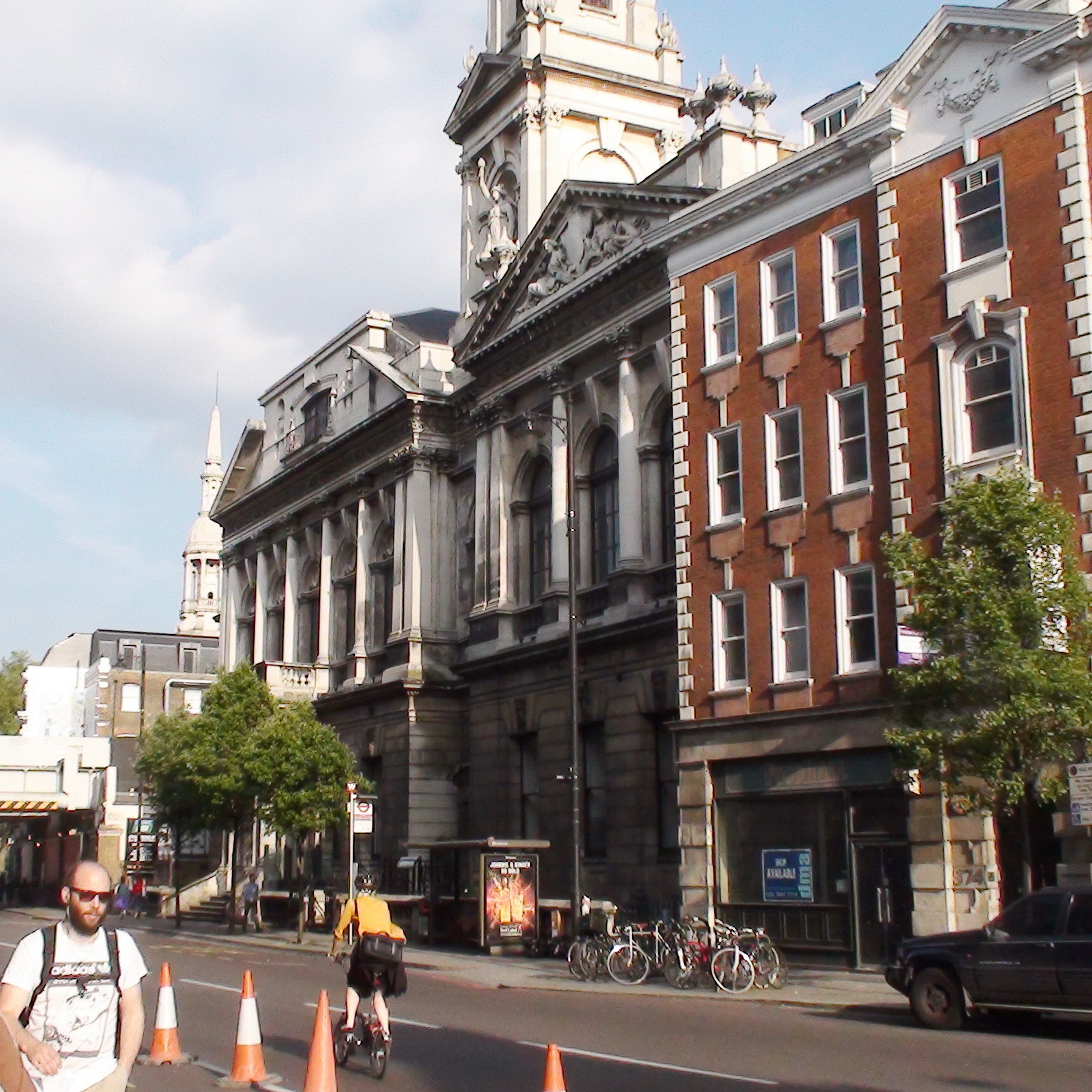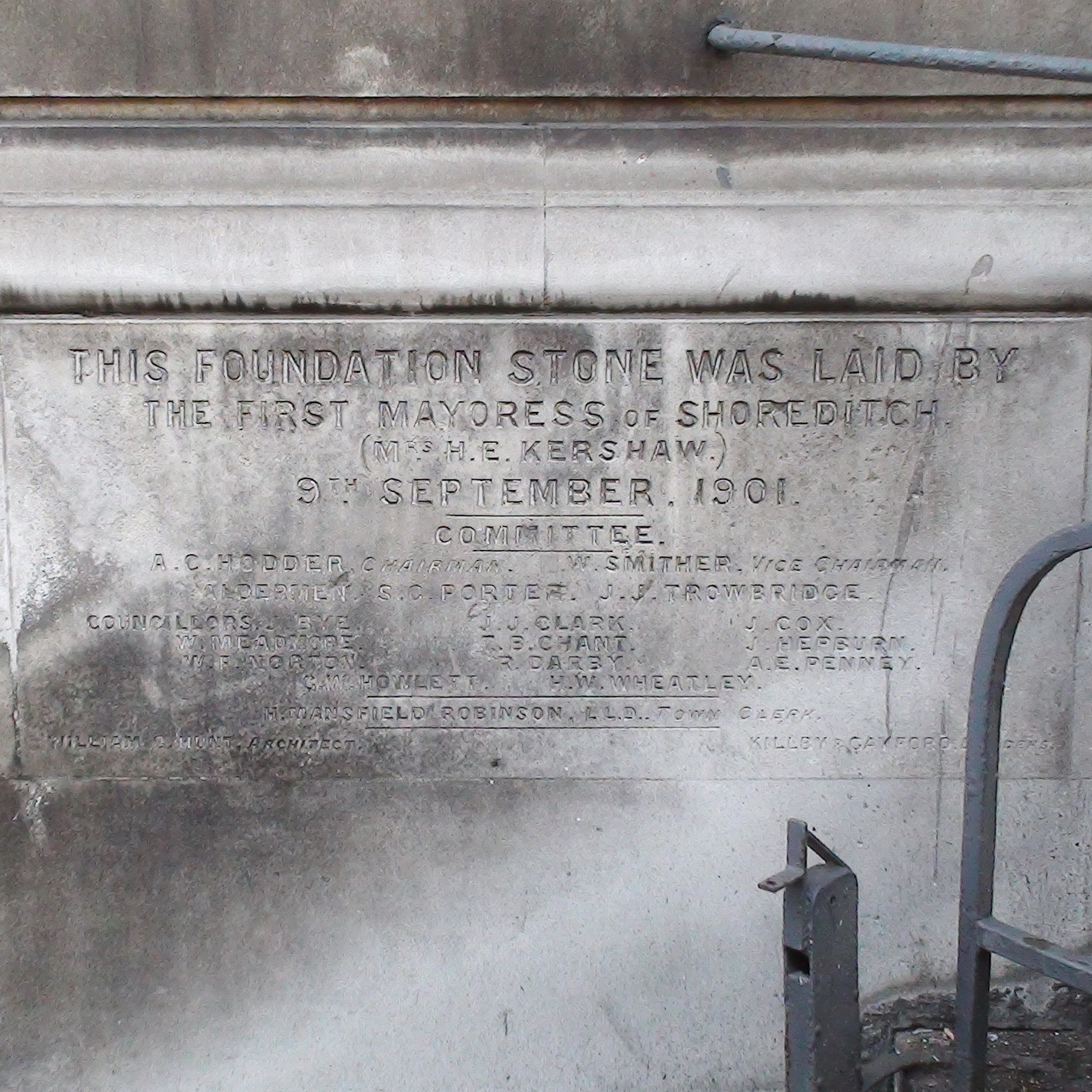Erection date: 9/9/1901
This foundation stone was laid by the first Mayoress of Shoreditch (Mrs H. E. Kershaw), 9th September 1901.
Committee:
A. C. Hodder - Chairman
W. Smither - Vice Chairman
Aldermen:
S. G. Porter
J. J. Trowbridge
Councillors:
J. Bye
W. Meadmore
W. F. Norton
G. W. Howlett
J. J. Clark
T. B. Chant
R. Darby
H. W. Wheatley
J. Cox
J. Hepburn
A. E. Penney
H. Mansfield Robinson, LLD - Town Clerk
William G. Hunt - Architect
Killby & Gayford - Builders
A describes the unveiling as being "completely obscured from public view by a hoarding constructed to meet the necessities of building operations, but being so close to the continuous roar of the traffic in Old Street, as to render the voices of speakers at the ceremony at times almost inaudible".
2024: Steve Parlanti sent us details of the ceremonial trowel used at this event. It was presented to Mrs Kershaw by the architect, W. G. Hunt. Steve bought it at and is keen for it to return to Shoreditch.
Site: Shoreditch town hall (1 memorial)
EC1, Old Street, Shoreditch town hall
Foundation stones do not always qualify for 91│ď╣¤═° (too dull) but "first Mayoress of Shoreditch" caught our attention.
This town hall was built in 1866 by Shoreditch district surveyor, Caesar Augustus Long, with a 1898-1902 extension by W. G. Hunt. gives the history of the building with a picture before the extension.
Some spaces in this building are now available for hire and has some photos of the interiors.
2021: reported "In Pictures – Shoreditch Town Hall Gets First Exterior Clean in 155 Years". It was very dirty. There we learn: "Adorned with its iconic statue of Progress, the building exemplifies the purposeful optimism of the era, its “More light, more power” motto - carved beneath the Shoreditch crest - encapsulating this forward-looking ethos. From its opening in 1866, the Town Hall was the hub of local democracy and civic life for over a century. Its status as a political focal point was underlined by the arrest there of suffragette Sylvia Pankhurst in 1913. The Town Hall was also a hugely popular Music Hall venue from the late 19th century to the early 20th century, in spite of a catastrophic fire in 1904. Hosting the first-ever televised boxing match in 1955, it then became best known as a major boxing venue until 1975. Its subsequent decline into neglect during the 1980s was a sad fate for such a proud building with such a colourful history."









Comments are provided by Facebook, please ensure you are signed in to see them